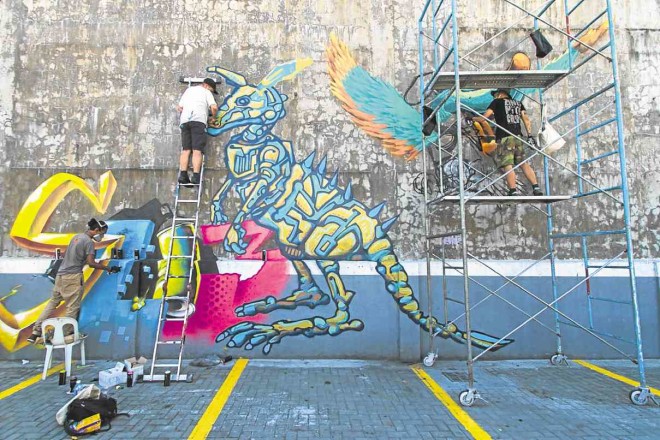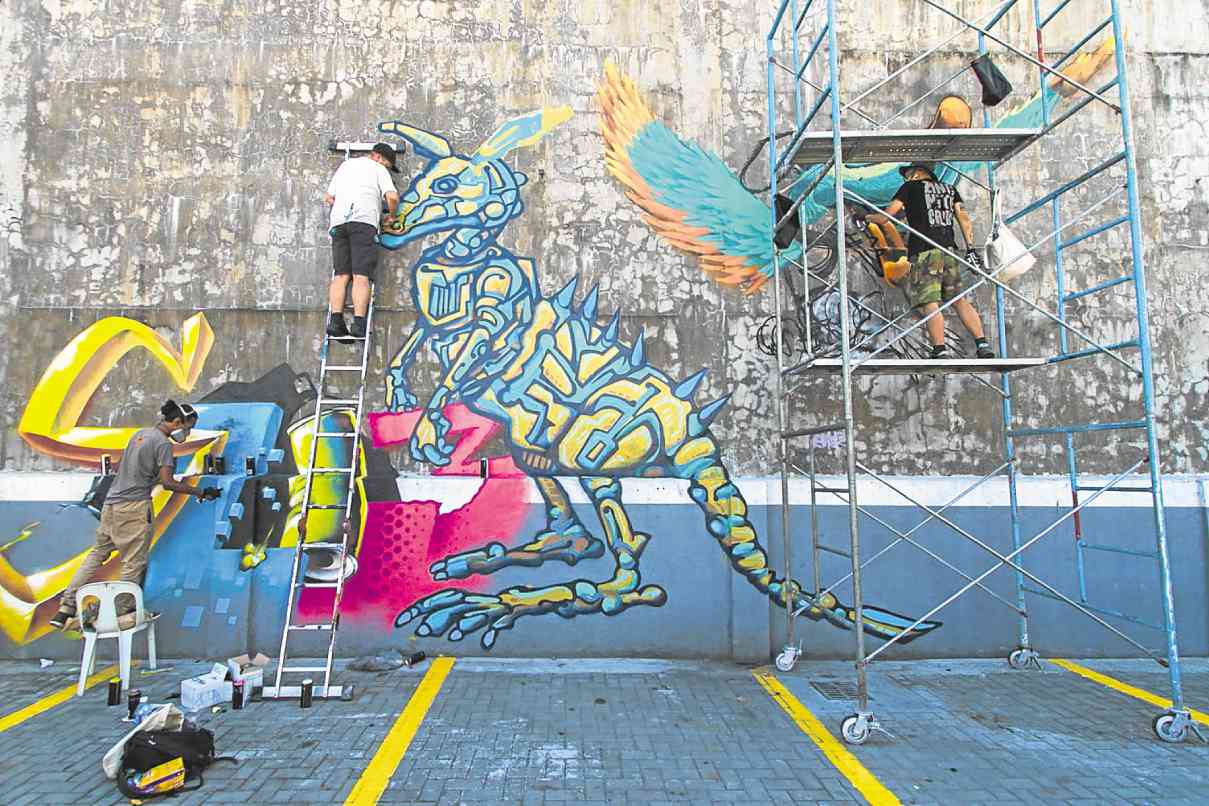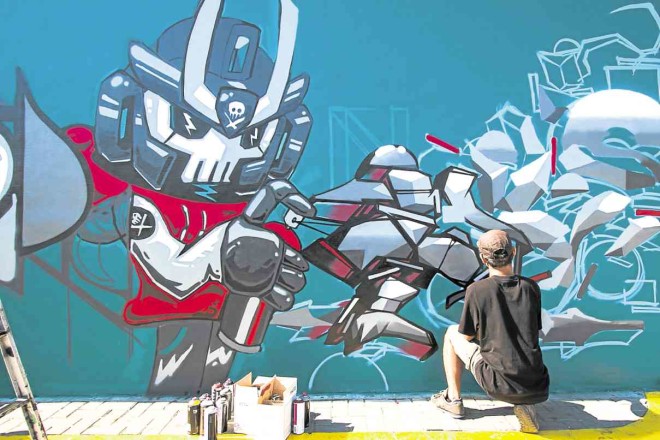
While graffiti previously had a bad reputation, it has undergone an image overhaul in the last few years, and has since been accepted as part of popular culture and society. Previously only seen as vandalism, it is now a legitimate form of street art, for free speech and expression.
While it can be argued that graffiti defaces public property and is destructive, many of its practitioners and supporters say that it’s a way of reclaiming and beautifying space, and bringing art to the masses.
Local graffiti artists are thus thankful for events such as Meeting Styles Philippines where they can showcase their talents without the hassles and relative dangers they face when painting in the streets.
Meeting of Styles Philippines (MOSPH) is the local arm of Meeting of Styles, a nonprofit organization that supports intercultural exchange and aims to create a forum for the international art community to communicate, assemble and exchange ideas, work and skills.
Street artist Trip63 said that organizing MOSPH, now on its third year, was one of the biggest challenges he faced. This year’s two-day event was the biggest, as the previous ones were more of a gathering of street artists than a full-blown event.
The logistics and legwork needed to look for sponsors (TaskUS and Firechat App), hotels for the international artists, and especially the venue where they would paint were daunting. Asked if it was worth it, a smiling Trip63 answered in the positive. All his hard work didn’t go unnoticed, as his fellow street artists agreed that he single-handedly brought the whole thing to life.
MOSPH effectively transformed the drab gray parking lot of Anonas LRT City Center into a veritable kaleidoscope, with colorful pieces adorning the walls, and street artists mingling.
From tags and bombs to full-blown murals, every discipline of graffiti was well-represented. It didn’t matter what they painted; what’s important was that they did it. Everyone was appreciative of the different styles coming together because at that time, no one was a bomber, or a tagger, or a painter. They were only artists.
Adrenaline rush
Geloy Concepcion, a photographer and participant in MOSPH, said that since he was a child, he always had an affinity for the streets. Maybe that’s why he was so enamored with graffiti, he said, while shaking a can of spray paint.
He was introduced to the art form after meeting and befriending members of Pilipinas Street Plan, a long-running graffiti crew. From there, his passion grew and he has been able to exhibit his works around Asia.
Asked why he practices graffiti, Concepcion said that, at first, he did it for the adrenaline rush, aware that there’s a big possibility that an artist can go to jail. Eventually, though, he started appreciating the connection he was able to make when passersby admire his work.
He also said graffiti artists are actually doing a service to the public. They bring art to people who can’t afford to go to art galleries, and are reclaiming public spaces by making these more beautiful and colorful.
Quiccs, also representing Pilipinas Street Plan, agreed. He said that just because people can’t go to art galleries doesn’t mean they don’t deserve to see or experience art.
He added that there is an unfair stigma associated with graffiti artists, and that it’s not so much the act of painting that people see as vandalism, but the materials, such as spray paint, and also the pieces themselves.
Chill, another artist from Pilipinas Street Plan, said that when he paints murals of birds, people appreciate it, but when they see him painting his name, they immediately think he’s a vandal. “Labo nga, eh,” he said with a grin and a shake of his head.
He noted that it’s not all bad. People are now more accepting of street art. Before, Filipinos appreciated just contemporary art in the galleries, but now galleries are looking for urban art. “Nakakapag-gallery na kami dahil sa urban art.”










































